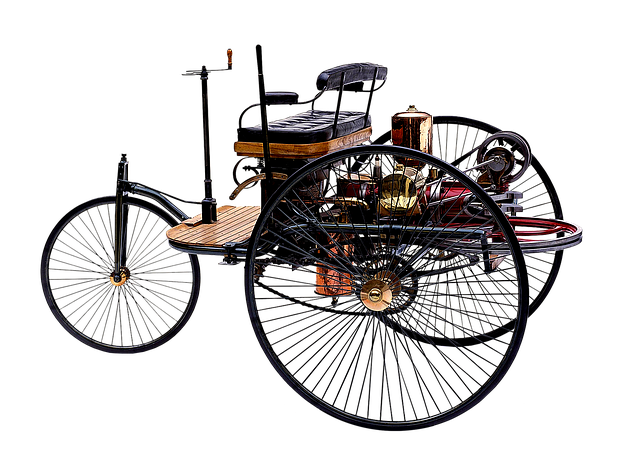Looking to register your car in California? This comprehensive guide will walk you through the process, ensuring a smooth transition. First, understand the state’s unique registration requirements for vehicles. Then, gather essential documents, including proof of ownership and insurance. The key step is accurate VIN verification, which ensures your vehicle’s identity. Choose the right registration type based on your vehicle’s classification. Finally, submit your application and fees at a California Department of Motor Vehicles (DMV) office or online.
- Understand California Car Registration Requirements
- Gather Necessary Documents for VIN Verification
- Perform Vehicle Identification Number (VIN) Check
- Choose an Appropriate Registration Type
- Submit Application and Pay Fees
Understand California Car Registration Requirements

Before registering your car in California, it’s crucial to understand the state’s specific requirements for vehicle registration. This process involves several steps, including verification of your car’s unique identifier, known as the Vehicle Identification Number (VIN). The VIN is a critical component in ensuring that every vehicle is accurately documented and tracked. In California, this often includes a vin inspection or vin verification, which confirms the vehicle’s make, model, year, and other essential details.
By law, you’ll need to have your car inspected by an authorized agent or a mobile vin inspector who can perform a vin inspection. This step is vital for issuing a registration certificate and license plate. Moreover, having reliable tools like a mobile vin verifier can streamline this process, making it easier for both vehicle owners and officials to maintain accurate records.
Gather Necessary Documents for VIN Verification

To begin the car registration process in California, you’ll first need to gather all the essential documents for VIN (Vehicle Identification Number) verification. This includes the title or a valid bill of sale from the previous owner, as well as your valid driver’s license and proof of insurance. Additionally, for a mobile VIN inspection or verification service, you might require an appointment confirmation or a quote from a certified inspector. Ensure these documents are readily available to streamline the registration process.
The California Department of Motor Vehicles (DMV) requires a complete and accurate VIN verification to validate that your vehicle matches its records. Having these documents on hand allows for a smoother transition during the inspection, whether you’re conducting a traditional in-person visit or opting for a convenient mobile VIN inspection service.
Perform Vehicle Identification Number (VIN) Check

Before you can register your car in California, it’s crucial to perform a Vehicle Identification Number (VIN) check. This step is essential as it verifies the vehicle’s history and ensures it’s not stolen or has any outstanding issues. You can conduct this vin verification through various methods, including using a trusted mobile vin inspection service or visiting a local DMV office.
A mobile vin verifier, for instance, can provide a convenient and efficient way to complete this task. These services allow you to obtain a detailed report of the vehicle’s past, including its ownership history, accident records, and maintenance logs. This information is vital in making an informed decision about purchasing a used car and ensuring compliance with California’s registration requirements.
Choose an Appropriate Registration Type

When registering your car in California, understanding different registration types is crucial. The choice depends on factors such as vehicle age and intended use. For instance, new or relatively recent vehicles may qualify for standard registration, while older cars might require a historical plate. If you’re purchasing a used car, opt for a title and registration from the seller to initiate the process. It’s essential to verify the Vehicle Identification Number (VIN) during this phase, which can be efficiently handled by a mobile VIN inspection or verification service.
Consider using a mobile VIN verifier to ensure accuracy. This service checks the VIN against California’s database to confirm vehicle history and eligibility for various registration types, such as standard, classic, or custom. A mobile VIN inspection is quick and convenient, allowing you to make informed decisions about your car’s registration category.
Submit Application and Pay Fees

After gathering all the required documents, it’s time to submit your application and complete the registration process. You’ll need to fill out a California Vehicle Registration Application (DMV Form VR-123), which can be done online or in person at a local DMV office. Make sure to include all necessary information, such as your personal details, vehicle specifications, and proof of insurance. Alongside your application, you’ll be required to pay the appropriate fees. These include the registration fee, vehicle license fee, and a title fee if applicable.
For added convenience and faster processing, consider opting for mobile VIN verification or inspection services. These services allow you to submit your vehicle’s unique VIN (Vehicle Identification Number) digitally, eliminating the need for an in-person visit. This modern approach streamlines the registration process, ensuring a smoother experience while maintaining the necessary VIN verification requirements.
Registering a car in California involves understanding state requirements, gathering essential documents, completing a VIN verification check, selecting the right registration type, and submitting applications along with fees. This process ensures that your vehicle is legally operable and compliant with local regulations. Remember to keep your documentation up-to-date for smooth future transactions.
